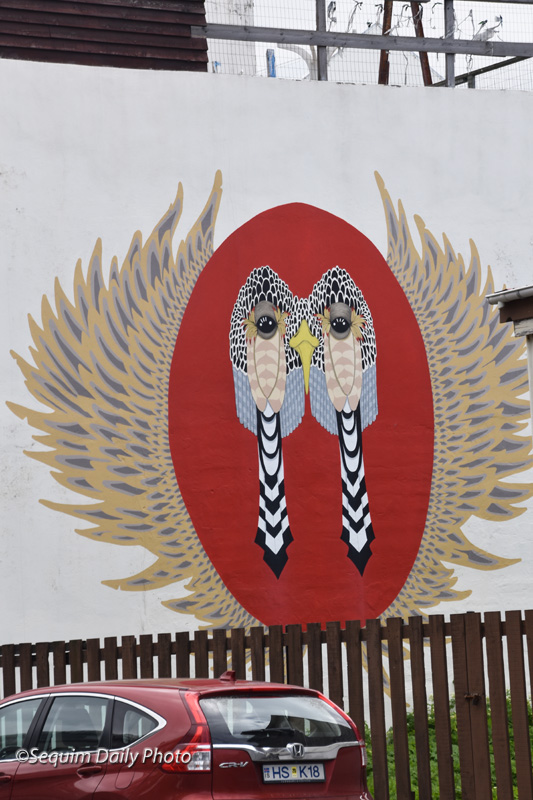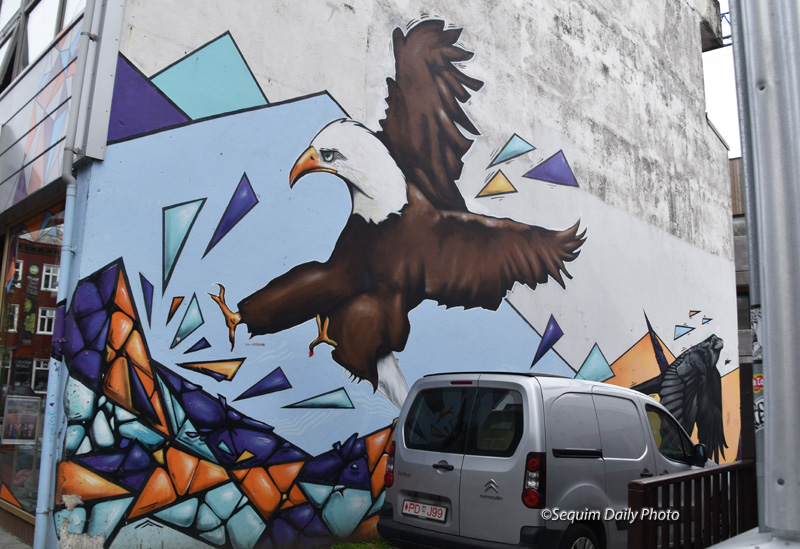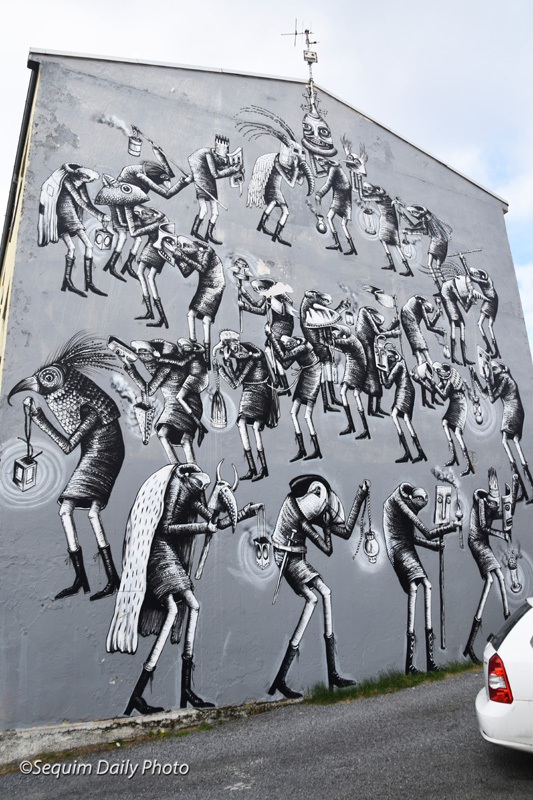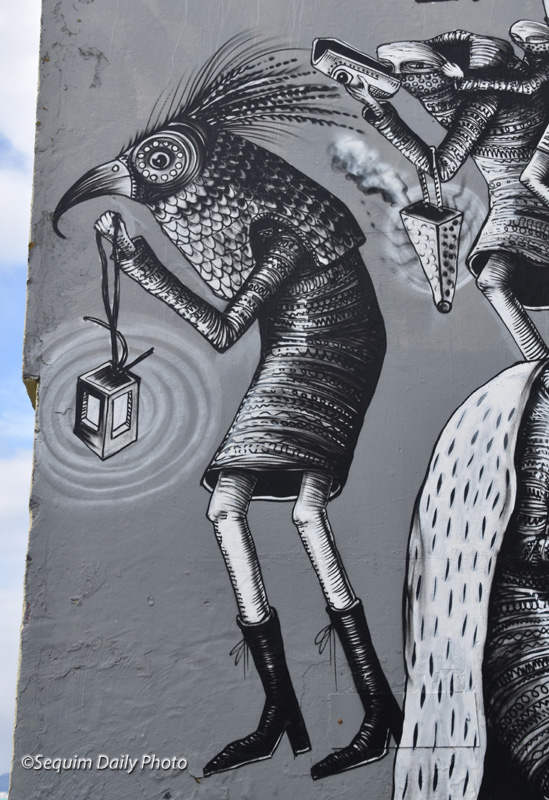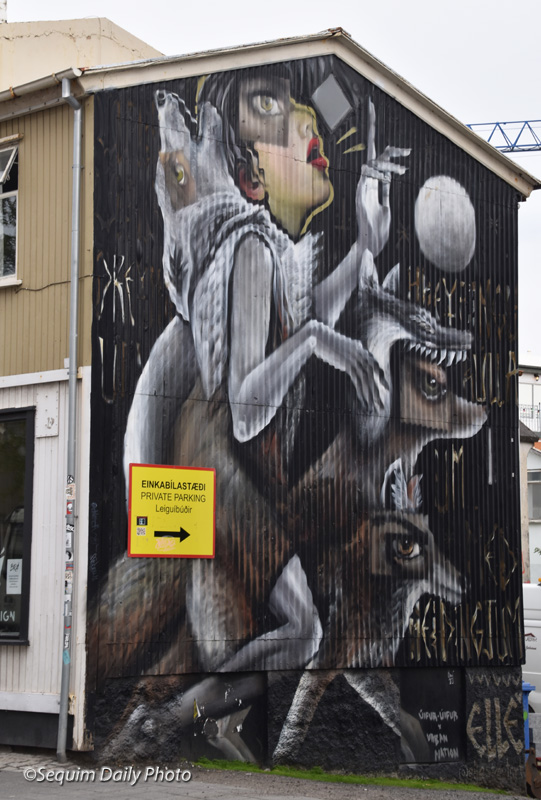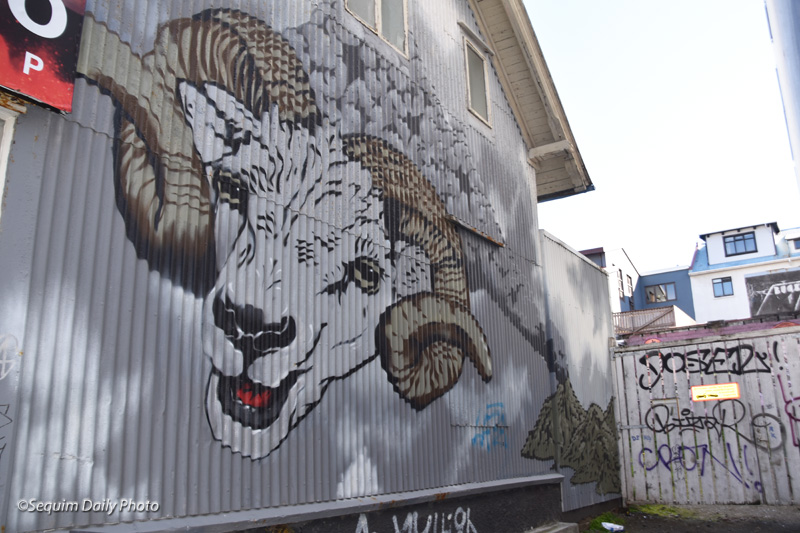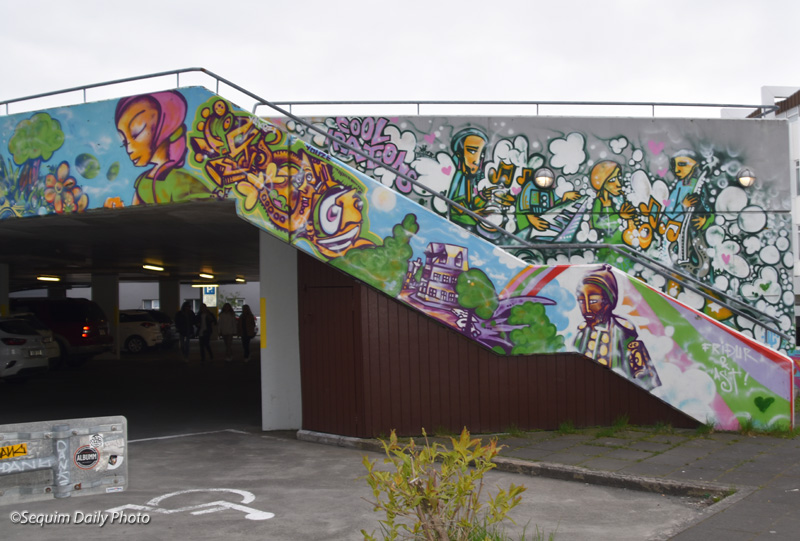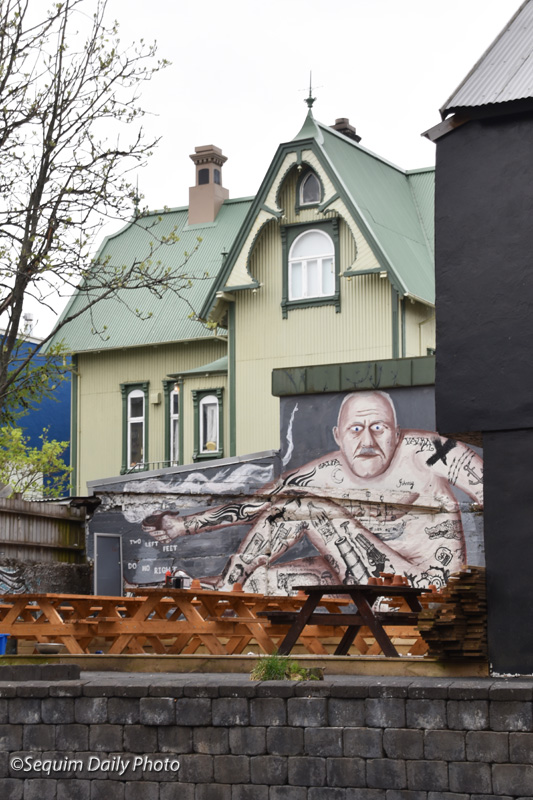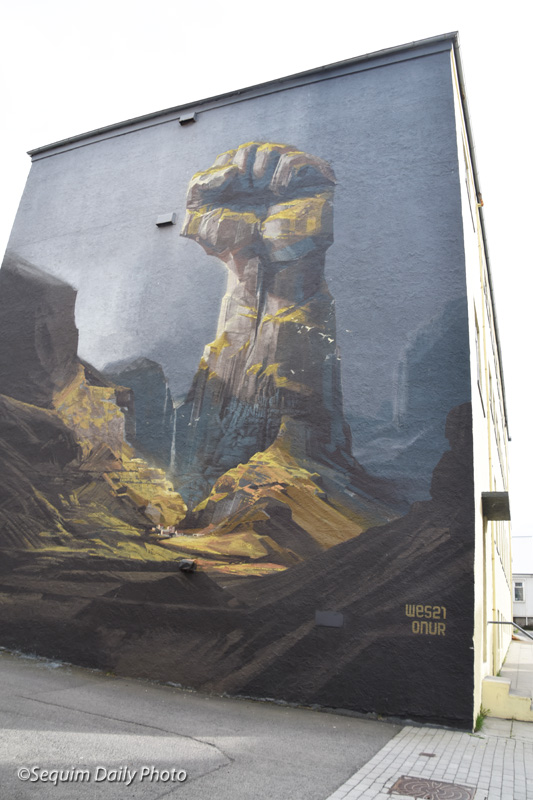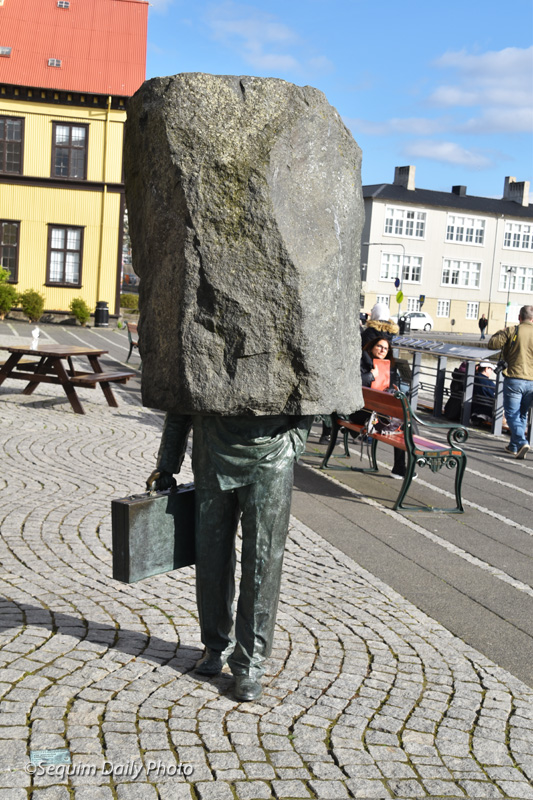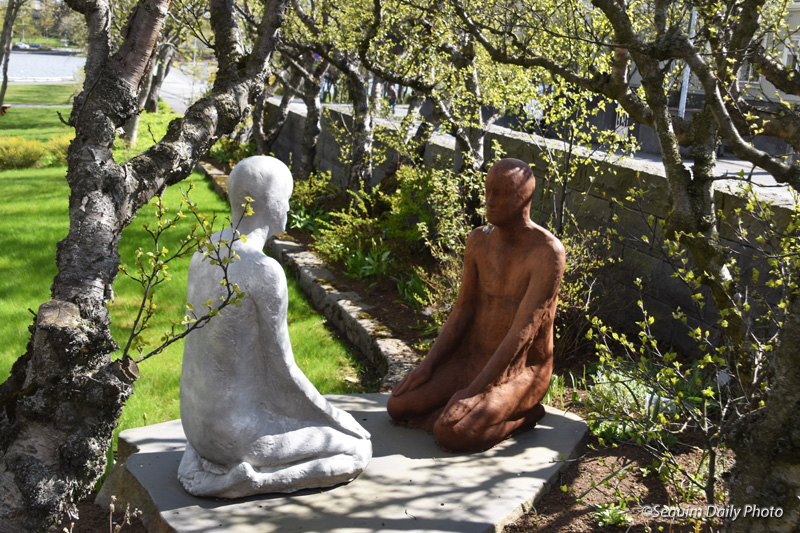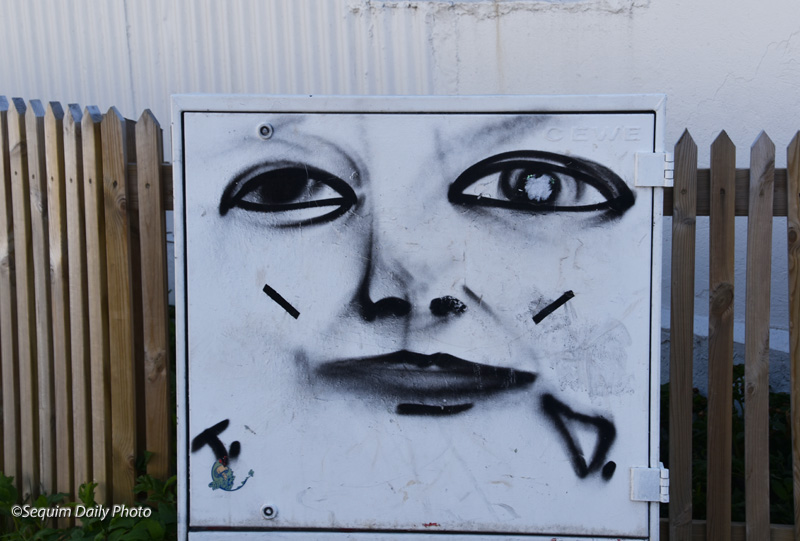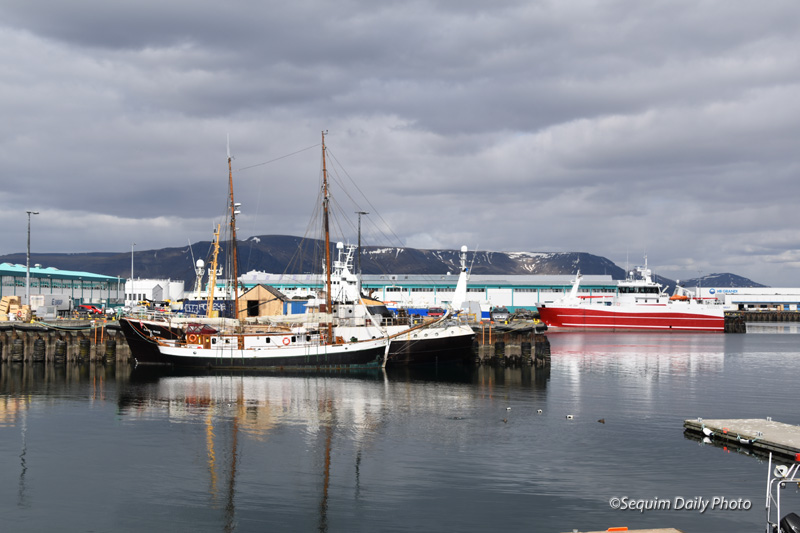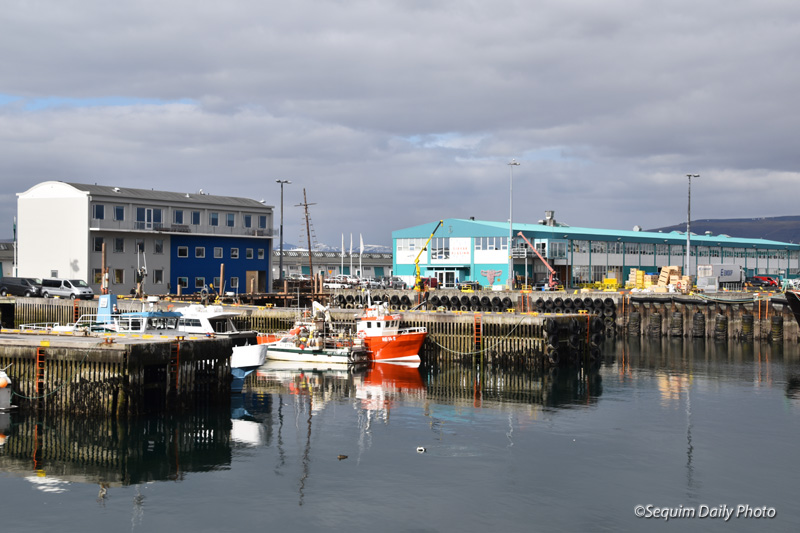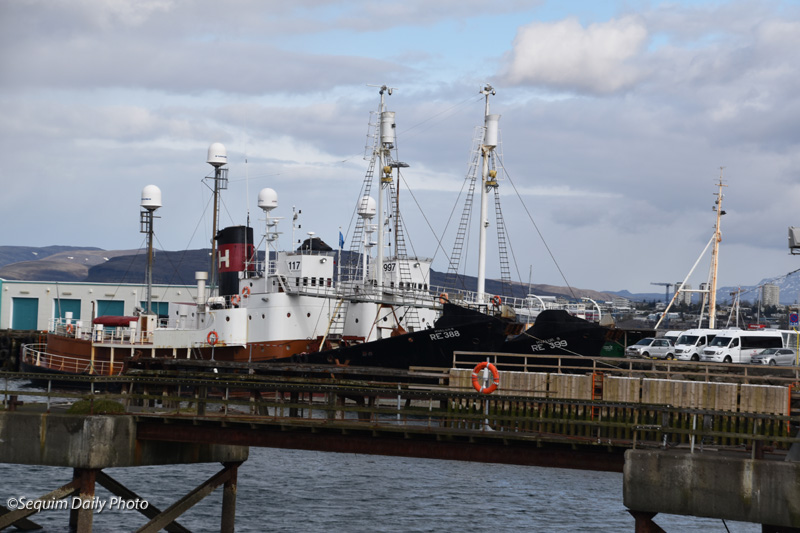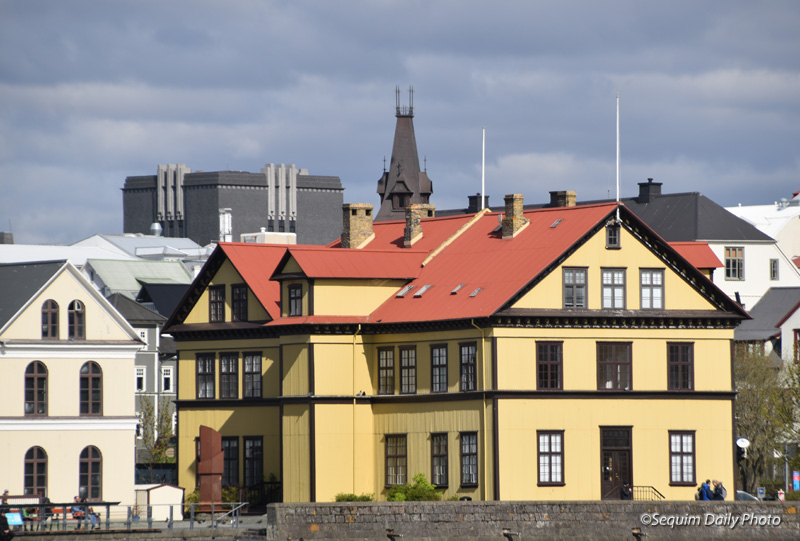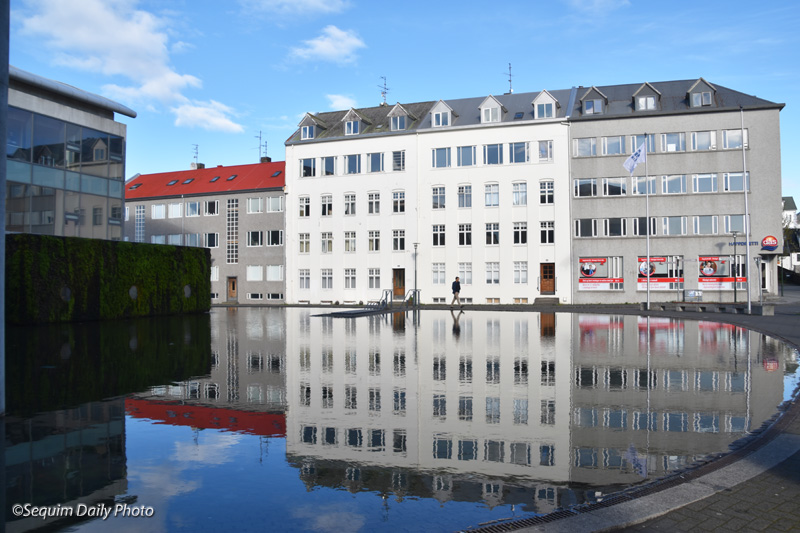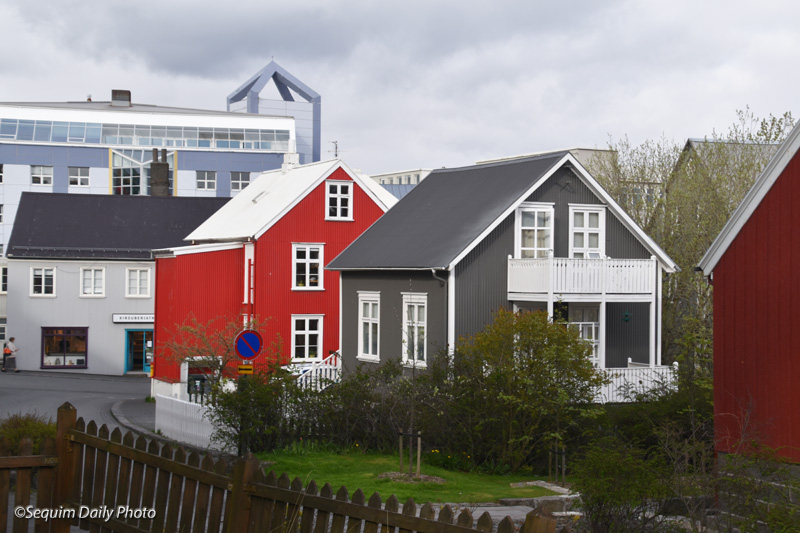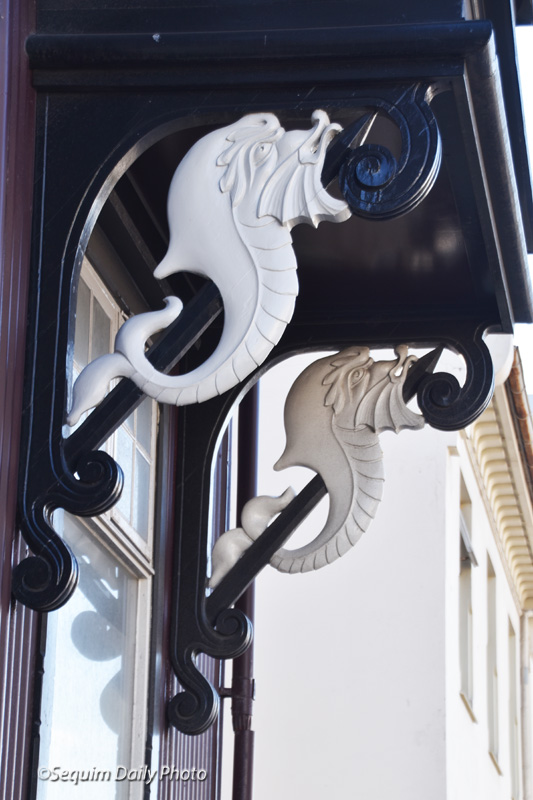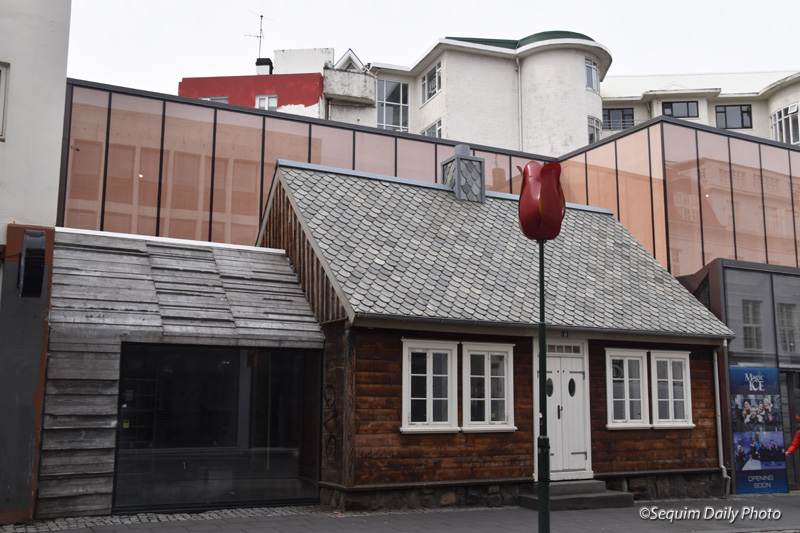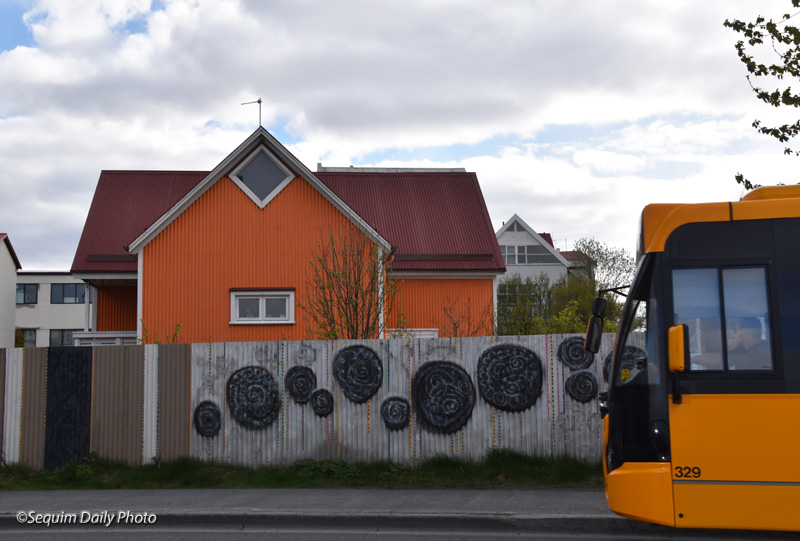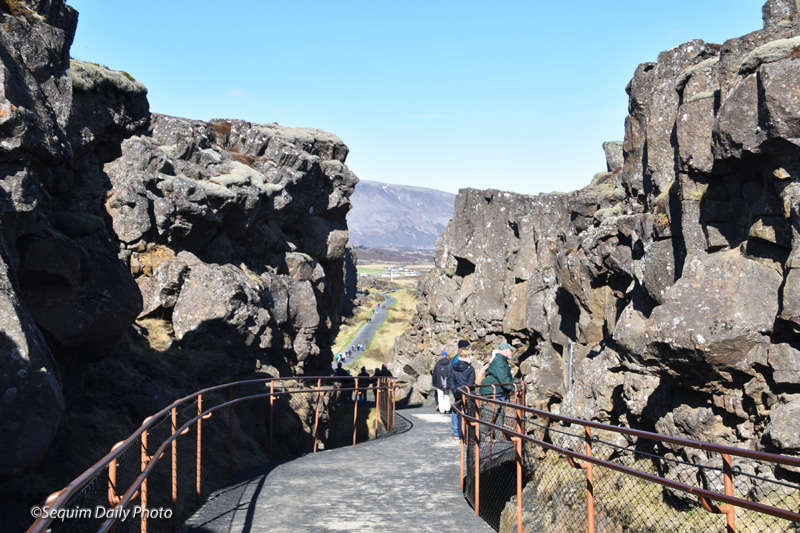
Here’s the biggest reason we went to Iceland: Pingvellir National Park, a spot so rich in geology and history that it’s a hotspot both of plate tectonics and a birthplace of Icelandic democracy.
First, tectonics: The rocky cliffs above? On the left is the North American plate. On the right is the Eurasian plate. These divergent plates meet in a rift zone roughly in the middle of Iceland. This fissure and others like it show the pull of these plates, moving apart at about the rate your fingernails grow each year. This is the only place in the world where this rift is above sea level.
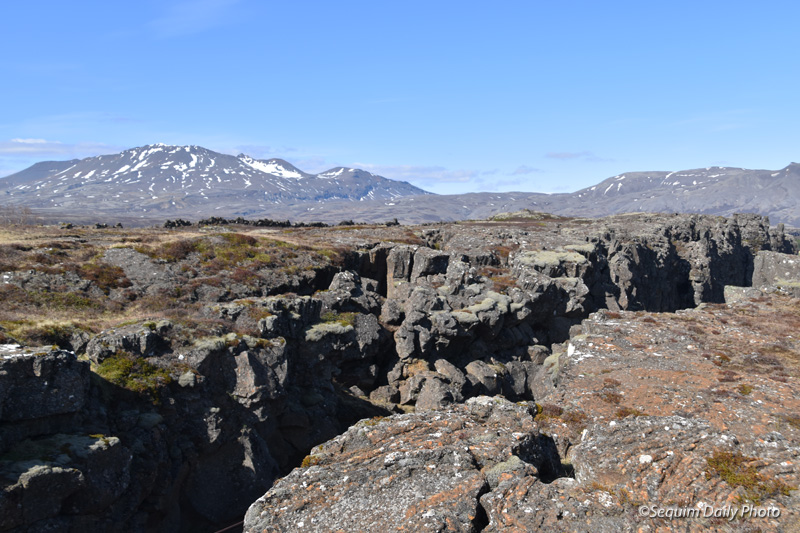
In Sequim we live in a subduction zone where the Juan de Fuca Plate is slowly crashing into and diving under the North American Plate. In Iceland, the tectonics are the opposite: the plates diverge, moving slowly apart.
The fissures above were once liquid lava flowing from the earth’s molten center which is very close to the surface compared to other places on Earth.
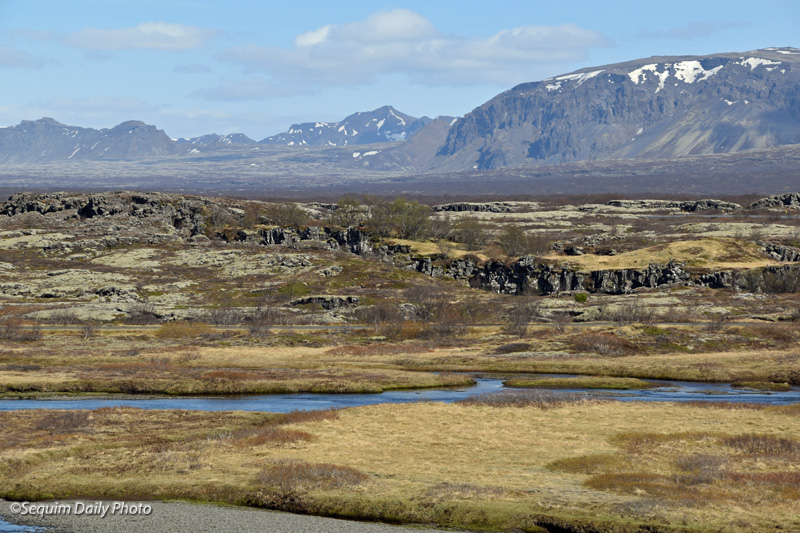
Some of the fissures are filled with crystalline water. These waters can be explored by snorkeling and scuba diving.
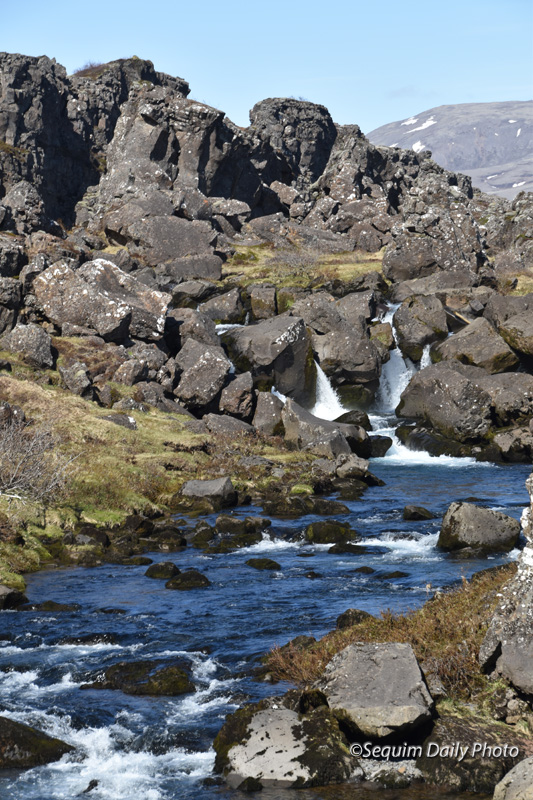
These smaller waterfalls are on the Oxara River. It empties into the lake below.
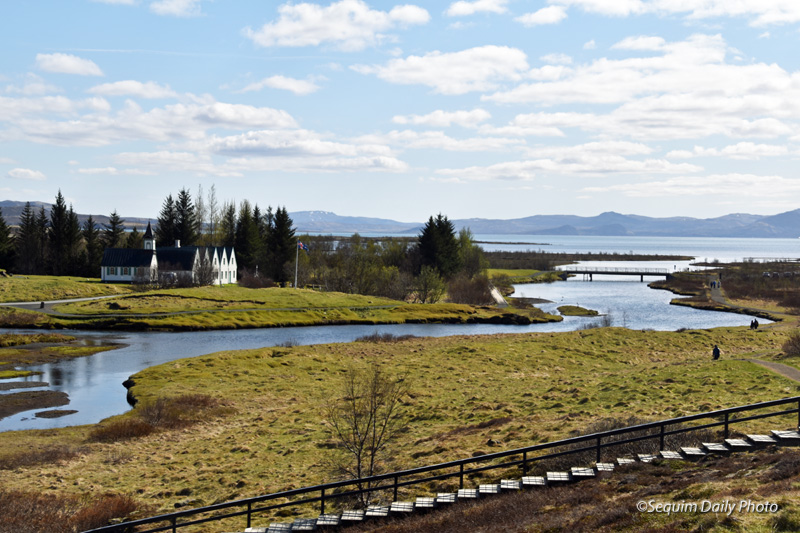
The scenery is beautiful. The lake in the distance is the largest fissure of all in Pingvellir and it’s a dramatic example of the North Atlantic Rift.
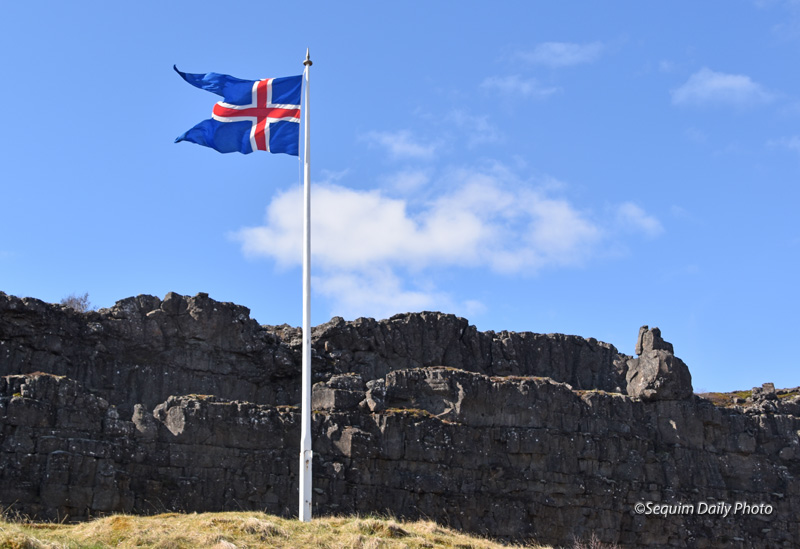
And here is the center of the history in Pingvellir, the “Law Rock.” In around 930 A.D., about 60 years after settlement of Iceland, local chieftains from throughout the country began to meet annually at this site to work out consensus on critical issues and laws. These gatherings, called the Alpingi, continued for hundreds of years, changing after an alliance with Norway but continuing eventually as an appeals court until 1798.
Click here for more information about Iceland’s fascinating geology and here for background about Pingvellir history and a bit about geology.
